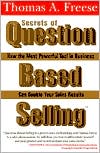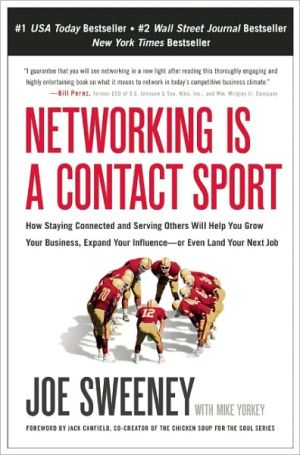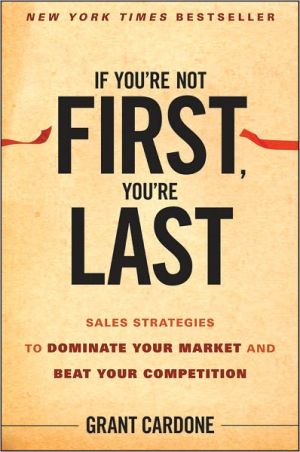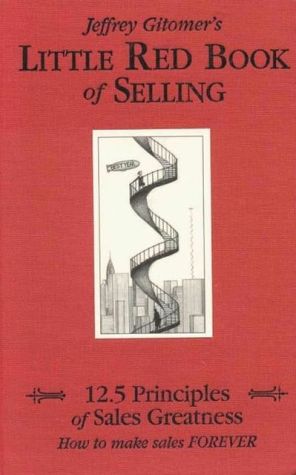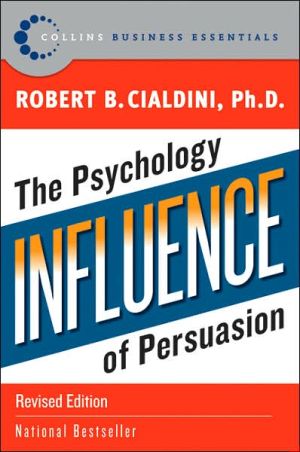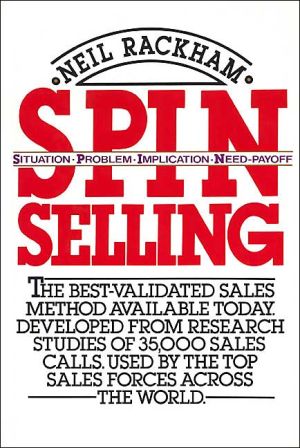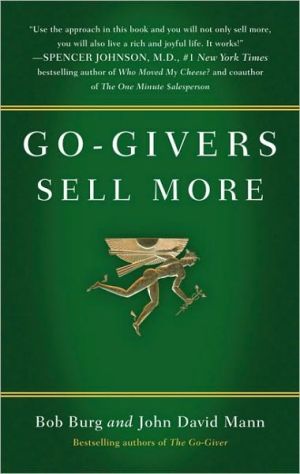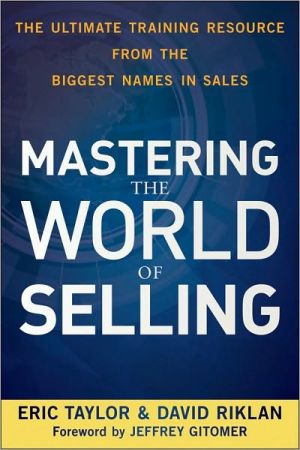Secrets of Question-Based Selling: How the Most Powerful Tool in Business Can Double Your Sales Results
Question Based Selling ( QBS®) is a commonsense approach to sales, based on the theory that "what" salespeople ask-and "how" they ask-is more important than anything they will ever say. This technique makes sense because in order to present solutions, you first must learn your customer's needs.\ How do you uncover a prospect's needs? By asking questions. But not just any questions. You must ask the right questions at the right time. And this book provides a step-by-step, easy-to-follow...
Search in google:
Unlock the secrets of Question Based Selling and see your sales soar.
Use People's Curiosity to Make the Sale\ Excerpted from Secrets of Question-Based Selling by Thomas Freese © 2000\ The newly hired salesperson, trying to rationalize his lack of production during the first month on the job, explains to his boss, "Sir, I can lead the 'horses' to water, but I can't always make 'em drink."\ "Make 'em drink?" the sales manager sputters. "Making customers drink is not your job. Your job is to make them thirsty!"\ The sales manager in this anecdote makes an interesting point. It's not a salesperson's job to make people buy. Rather, the salesperson's function is to uncover new opportunities, and then pique the prospect's interest, so they will want to know more about the products and services being offered.\ In Question Based Selling, we want prospective customers to become curious. We want them to ask questions, and we want them to be "thirsty" for more information about the value we provide. But this requires a change in strategy. Rather than launching right into a litany of features and benefits, in an attempt to pique your prospect's interest, QBS recommends piquing the prospect's interest first in order to create new opportunities to uncover needs and present solutions.\ If you want to engage new prospects in productive sales conversation, you essentially have two choices. You can be aggressive and try to force your way in, or you can make prospects curious enough to want more information about the value you provide-so they will invite you in. Not surprisingly, most of us would rather be invited in than to try and use brute force.\ The Conversational Layering model (from chapter 6) shows us that curiosity is the key that unlocks the rest of the sales process. If a prospective buyer is not the least bit interested in who you are, or what you can do for them, then you will not get their time or attention. Fortunately, the opposite is true. As prospective buyers become more and more curious about how you can offer value, it becomes much easier to create new opportunities to sell. This is actually good news for salespeople because it simplifies the sales process. It also puts you in control of your own destiny. In other words, if you can make prospects curious, then you will have many more opportunities to establish credibility, build relationships, uncover needs, present solutions, and secure the commitments necessary to move forward with a sale.\ Now, the question is, what makes people curious?\ The Easiest Way to Make Someone Curious There are lots of ways to make people curious. You can make someone curious by saying something that piques their interest. You can also leverage curiosity with provocative voice-mail messages or by sending intriguing emails. We will analyze each of these as the chapter unfolds, but for starters, let's begin by talking about the easiest way to pique someone's curiosity.\ Making people curious doesn't have to be difficult. In fact, the easiest way to pique someone's curiosity is to simply say, "Guess what?" Virtually everyone you say this to will stop what they're doing and say, "What?" That was easy. Now, at least for the moment, you have their complete and undivided attention.\ You can produce a similar result by saying, "Can I ask you a question?" That's another easy yes. Test it out for yourself. Simply walk up to the next person you see and say, "Can I ask you a question?" This question usually stops people in their tracks because they instinctively begin to wonder what you are about to ask.\ Both of these questions are designed to create what we call a mini-forum for engagement. We said earlier that you must first have a prospect's time and attention in order to position the value of your product or service. In the Conversational Layering Model, we characterized this as having a forum for selling. But sometimes (especially in sales) you have to walk before you can run.\ At the very beginning of the sales process, sellers haven't yet earned the right to ask for several hours of the prospect's time. It's more likely that we are just trying to get through the first few minutes of the call. By asking for smaller commitments, you make it easier for prospects to engage-at least initially. Then, what you do to pique the prospect's interest further, will ultimately determine whether the sales process moves forward or stalls.\ This is important because the larger sale is usually an accumulation of smaller successes; and if you can consistently secure the prospect's attention, you will create many more opportunities to expand your sales conversations. For example, I don't start probing for needs without first saying, "Can I ask a couple specifics about your current _________ environment?" Likewise, I rarely offer a suggestion without asking, "Would you like to hear some feedback?" We use this technique throughout QBS to garner the prospect's time and attention, which is much more effective than just trying to bully your way in.\ I would like to add that leveraging curiosity in the strategic sales process is not a manipulation strategy. Quite the contrary. Asking questions to make sure it's OK to proceed is not only good manners, it demonstrates that you are sensitive to the prospect's situation and you are also very respectful of their needs. Let me ask you, do customers appreciate it when someone is respectful of their time and space?\ Voice Mail: Friend or Foe?\ For many sellers, voice mail is the enemy. It's the gatekeeper that stands in the way of a salesperson talking directly with the prospect they are trying to reach. As we said in chapter 1, thousands of voice-mail messages are being left every day, but only a small fraction of these calls are ever returned.\ Prospects, on the other hand, think voice mail is terrific. Automated messaging systems have given them the flexibility to be out of the office and away from their desks, yet they can still receive important messages. Voice mail also enables key decision makers to screen incoming calls, so they can focus on their business rather than be interrupted by constant solicitations.\ Some sales trainers teach salespeople to hang up when they get a prospect's voice mail and not leave a message. Instead, they would rather you keep calling and calling until the person you're trying to reach actually picks up the phone. The busier the prospect, or the more averse they are to receiving sales calls, the less productive this strategy is, however.\ Other sales trainers suggest that you should leave increasingly forceful voice-mail messages so prospects will feel a sense of obligation to call you back. The problem is, these messages often fall victim to Charlie Brown's Teacher Syndrome (chapter 6), because salespeople end up leaving the same old worn-out messages over and over.\ In QBS, we want to differentiate ourselves from the typical sales caller, but not just for the sake of being different. We want to differentiate ourselves for the sake of being more effective. This means leveraging curiosity on voice-mail messages to get more call backs and, ultimately, engage more prospects in productive sales conversation.\ Once I learned how to make people curious, voice mail became a terrific asset and a good friend. In fact, one of the secrets to my success in selling was that I had a very high engagement rate-95 percent of the voice-mail messages I left generated a return call. Let me say that again: 95 percent of the people I called, called me back. Why did they call back? It's because when I left a voicemail message, I didn't think about features, benefits, solutions, needs, or relationships. I only thought about one thing-what could I say that will cause this person to become curious enough to call me back.\ Leveraging curiosity does require some thought and creativity. There are no magical scripts that will guarantee your success on each and every call. But there are many ways that you can pique someone's interest (when leaving voice mail) in order to engage potential customers in a mutually productive sales conversation. Here are a few ideas to get you started.\ A Question That Only You Can Answer Salespeople aren't always calling new prospects. Sometimes we're calling people where there is already a relationship-for example, existing customers, business partners, or other contacts in our industry. Calling someone who is familiar can be much easier than making cold calls, but you still have to compete with everything else that's vying for that person's time and attention. So rather than leave the same old generic-sounding message, you might leave a voice-mail message that says:\ Salesperson: "Hi Susan, this is (your name and affiliation). I was hoping to catch you for a minute because I have a question...that only you can answer. If you could please call me back, I'll be in my office this afternoon until around 4:30 P.M."\ Will Susan return the call? If your voice-mail message makes her curious, she will. This technique is particularly effective because it's personal without being offensive. It also conveys a certain sense of urgency. After all, any question that "only you" can answer must be important. It's also very easy to implement. Before you dial the phone, just think of a question that only your prospect can answer. Examples include: "Susan, how do you feel about ______?" or "What is your opinion on ______?" These are questions that only Susan can answer (by definition) because you are soliciting her thoughts, feelings, and/or opinions. By the way, most people (that you have some familiarity with) love to give their opinions, and they will likely be flattered that you asked.\ Something Made Me Think of You Using a similar approach, you can make existing contacts curious, so they will respond to your call, by leaving a voice-mail message that says, "Hi Richard, I decided to pick up the telephone and call...because something happened earlier today that made me think of you. If you get a minute, I'll be in the office until around 6:15 P.M. this evening. My telephone number is (770) 840-7640." If you were Richard, would you return the call? Most people will, especially if they receive the message before 6:15 P.M. They would want to know what had happened that made you think of them. Note: when they do return your call, be ready with a story or anecdote that will lead the conversation into your business reason for calling.\
Table of ContentsPreface The Best Sales Experience...I Hope You Never HaveIntroductionPART 1--A Short Course on QBS StrategyChapter 1Increasing Your Probability of SuccessChapter 2Mismatching The Avoidable RiskChapter 3The Herd TheoryChapter 4Gold Medals & German ShepherdsChapter 5Fueling the Sales ProcessPART II--Leveraging the Most Powerful Tool in SalesChapter 6Conversational LayeringChapter 7What Makes People CuriousChapter 8Establishing Credibility in the SaleChapter 9Escalate the Value of Your QuestionsChapter 10How to Solicit More Accurate FeedbackPART III--Implementation: Putting Methods into PracticeChapter 11 Navigating the QBS Sales ProcessChapter 12Turn Your Cold Calls into Lukewarm CallsChapter 13Getting to the "Right Person"Chapter 14Building Value in the QBS Presentation Chapter 15Closing More Sales...FasterEpilogueFor Sales Managers OnlyIndex
